Introducing the 4th Generation Mojo HD
The Mojo HD4 is the latest in a series of trail bikes from Ibis Cycles, featuring 27.5″ wheels, and 153mm of rear wheel travel, delivered through the efficient dw-link suspension, and it’s compatible with a variety of 160mm forks. The bike uses designs, expertise, and technologies derived from the HD3 and older Mojo models, and combines those together to produce a long travel 27.5″ bike that can handle the steepest most aggressive terrain found anywhere. According to Ibis, it was extensively tested over the past year throughout Northern California’s most rugged backcountry trails and also by members of the Ibis Enduro World Series (EWS) team.
It’s able to climb like a goat and descend gnarly terrain with plushness, stability, and composure.
The HD4 has the head tube angle slackened to 64.9° compared to the HD3’s 66.6°, a slightly lowered bottom bracket, a longer reach and wheelbase though the chainstay length has remained the same. They combined the redesigned geometry with a refined carbon fiber layup for greater overall stiffness for better stability and control. They’re using Dave Weagle’s latest iteration of his suspension which offers improved overall efficiency, and it’s integrated with stiffer upper and lower links. The redesigned seattube provides compatibility for up to 175mm dropper posts, while the Boost spaced rear triangle now accepts 203mm rotors and up to 2.8″ wide tires.
I like the new geometry which offers a stretched out top tube for better reach and roominess and the increased wheelbase for stability, especially at speed. I am 5’9″ and sometimes found the medium sized HD3 frame just a bit cramped, so I am looking forward to the longer cockpit of the HD4. The slacker 64.9° head tube angle, will provide improved control, security, and stability which will make the HD4 a full-fledged Enduro and All Mountain bike. Having the capability to run taller dropper posts is ideal since its nice to get the saddle out of the way on super steep and gnarly terrain. I am glad you can still run 2.8″ tires since I have found that width perfect for lots of the loose trail conditions that I deal with in Colorado. I like both of the new colors, but I truly dig the hot Fireball Red scheme.
Highlights
- The HD4 features a completely redesigned geometry with a focus on stability and speed
- You can expect excellent big hit performance through increased progression in the shock tune
- After much experimentation and real-world testing, we’ve landed on a 64.9-degree head tube angle
- Reach has increased across the board (up by 4mm on small, to 34mm on XL)
- Compatibility with the longest droppers
- 30% stiffer upper link, 40% stiffer lower link
- Refined carbon layup yielding greater frame stiffness overall
- Features dw-link v5 kinematics, Dave’s most efficient system to date
- 27.5″ wheels, up to 2.8″ tires
- Available in Fireball Red, or Añejo Silver & Lime
Pricing – Framesets and Kits
It will come in Fireball Red and Añejo Silver & Lime color options and will be offered as a frame starting at $2,999 (FOX Float shock as default) and several kits, including an NX for $4,199, an XT for $6,199, an X01 Eagle for $7,099 and an XX1 Eagle for $9,399. Depending on the kit level, there are options for Carbon wheels (either Ibis +$800 or I9 +$1,300 hubs), FOX Float X2 (+$270) shocks , FOX Factory 36 RC2 (+$124) forks , Ibis Carbon handlebar (+$68), and Schwalbe Nobby Nic 2.8″ or Maxxis Minion DHF WT 2.6″ tires. For a frame build, options are FOX Float X2 shocks (+$270), FOX Factory 36 RC2 (+$833) or FOX Performance 36 (+$709) forks, Fox Transfer Dropper Post (+$364) and a Cane Creek headset (+$67).
The HD4 will begin shipping worldwide on June 15th.
Detailed Specs
- Accepts 27.5″ tires in 2.3″, 2.5″, 2.6 and 2.8″ Plus size
- dw-link suspension, as always
- Boost 148mm rear/110 Front axle
- 6” (153mm) of rear wheel travel
- Carbon fiber monocoque frame and swingarm
- 160mm Travel fork recommended, approved for 170mm
- Weight for the frame and shock, size large, gloss finish: 6.6 lbs (2.98 Kg)
- 64.9º head angle
- Standard Shock: Fox Float 7.875×2.25″ with custom damping settings (full specs on June 13)
- Upgrade Shock: Fox Float X2, with climb switch, 7.875×2.25″, rider-tunable damping settings
- ISCG 05 compatible with removable adapter is available
- Threaded bottom bracket
- Super versatile internal cable routing including internal dropper routing
- Included polycarbonate down tube cable guard
- Chain stay length: 16.9″
- 160mm post mount, 203mm maximum rotor size
- Tapered Head Tube and Steerer
- Dual row angular contact bearings on the drive side of the lower link. Large 28mm x 15mm x 7mm radial bearings on the non-drive side for stiffness and long wear
- BB height with tire sag is the same with 2.3 – 2.8 tires
Suspension technology, drivetrain performance, materials technology, carbon frame construction techniques and especially wheel and tire technology have all enjoyed tremendous technological advances in the last few years. All of us who ride have benefitted greatly. All the technologies found in the HD4 are built to currently accepted state-of-the-art standards.
Further information can be found at ibiscycles.com/bikes/mojo_hd4
Progressive Geometry
One of the design goals of the HD4 was to enhance the bike’s handling capabilities over the rough and steep terrain. The Mojo HD and Mojo 3 have had a lot of overlap and geometry similarities, with the new HD4 we are interested in separating the two bikes and growing the HD4’s capabilities. We have been riding geometry testing mules for almost a year now, sampling different angles and lengths to determine the right feel for this bike. We’ve test rode extensively in Santa Cruz, Downieville, Northstar, and in the high Sierras to get a feel for different terrains and traction conditions and the particular needs of each.
In dialing in the geometry, we gave ourselves free reign to figure out what would work best. Instead of choosing a geometry by committee or based on other companies’ bikes, we chose our geometry based on what worked best when we rode the steepest and gnarliest trails we could find. In our testing, we were able to see what each geometry dimension actually did to help the rider. For example, by trying a number of head angles back to back to back, with all other geometry dimensions held constant, we were able to pinpoint some desirable characteristics. The obvious one is that with proper trail measurement, the bike’s ability to steamroll through rough terrain is greatly enhanced. Less intuitive, but borne out by testing is that reducing the head angle will allow the bike to achieve higher lean angles before slipping out. This change also makes the bike more stable as the trail transitions to off-camber, meaning it’s less likely to slip out or get pushed down by the trail. On the Mojo HD4, we set the head angle at 64.9 degrees to maximize the stability in off-camber sections, increase our maximum lean angle and allow us to carry great speed through the chunder.
Reach
We have seen many consumers buying bikes that were a size larger than we anticipated, indicating that we wanted to grow the reach of the Mojo HD4 by at least that much. We rode bikes with different reach numbers and were able to find a nice balance between being long enough without going too long. Compared to the Mojo HD3, size by size we increased reach by one whole frame size then added a little more. This longer reach combined with the slacker head angle greatly increases the wheelbase and gives a very stable ride for the roughest terrain.
Dropper Posts
Like most people who ride aggressively on their trail bikes, we have really enjoyed riding with longer and longer dropper seatposts, especially as the terrain gets rougher and steeper. We recognized that having the seat completely out of the way made all the difference when things got really hairy. So we set out to give compatibility with the longest dropper posts available today, with enough room for adjustment to fit everyone. Compared to the HD3 we lowered the tops of the seat tubes roughly one size so that a Large frame now measures 17.5″ center to top. We also ensured the internal bore of the seat tube was deep enough. This allows riders to use the longest seatpost possible and still get their correct saddle height. On the Medium, Large, and X-Large sizes, almost everyone should be able to use 170mm dropper seatposts, while 150mm dropper seatposts should work for almost all Small size owners.
Dw-Link Suspension
From the suspension standpoint, we absolutely love how the current Mojo HD3 pedals. We didn’t want to mess with such a dialed suspension design, so we left the kinematics the same for the Mojo HD4. What we did do, is engineer more progression into the shock leverage curve, allowing for more big-hit capability in very rough terrain. The travel went up a tiny bit, and it now has 153mm of rear travel. The bike is intended to fit a piggy-back rear air shock while still fitting a 22 oz water bottle in the frame. Coil shocks are not recommended, due to the clevis shock yoke extending the eye-to-eye too far to give a good bushing overlap ratio.
Travel
We think 6” of travel is right for most people’s riding needs; we felt it struck the best balance for a climbable enduro style bike. With a longer travel bike comes the temptation to put 180mm forks on them, thus requiring heavier frame construction and moving the bike into a different category.
Variable leverage rates and shock tunes can make a 6” bike feel it’s got much more travel, or it can be the other way around. Since our dw-link bikes tend not to get stuck in the middle of their travel and have a very linear feel to them, the available travel feels consistent, predictable and more usable.
Another advantage of sitting a bit higher in its travel is that we can lower the bottom bracket height, making for a better handling bike, while not being prone to pedal strikes.
Linkages
With continued refinement, we’ve managed to eek 30% more stiffness out of the upper link as compared to the last iteration of the HD. This upper link is backward compatible to the HD3. The HD4’s lower link’s stiffness is increased by 40% compared to the links on the Mojo HD3 and is unique to the HD4.
Molding Technology
We start by molding a sacrificial mandrel in exactly the shape that we want the inside of the frame to be. That becomes the 3D template for the bladder that holds all the carbon preform before it’s laid into the mold. This allows the lay-up to be done in one piece, with no joints anywhere. The result is a more precise structure that eliminates the need for additional foam or filler to mold the complex shapes. What that means for you is a lighter and stronger frame, critical factors in hitting our targets for weight and stiffness.
Shocking
We’ll tell you about the 2018 shock that comes on the HD4 NX kit on June 13th. While it’s a custom tune designed for this bike, it’s also a new shock and info on it is embargoed until then. We’ve got plenty of hours on the shock, and are confident that it’s ready for the rigors of taming the terrain you will be conquering with this beast.
We have an upgrade shock available on every kit, the excellent 2018 Factory Series Fox Float X2 with Kashima coating. On both shocks, we engineered more progression into the shock leverage curve, allowing for more big-hit capability in very rough terrain. To setup sag, go for 14 – 18mm / 25 – 30%.
Headset
We use the ZS56 lower headset. This allows for a bigger gap between the top tube and the down tube which results in a stronger front end with no weight penalty. It’s particularly effective on the small and medium. You may use several different Cane Creek headsets or the Chris King InSet 2 headset.
Routing
There’s a lot of versatility with the cable routing, using our cable port system. You can run full housing or interrupted housing. Interrupted housing using our available cable stops will allow you to save about 55 grams of weight over a fully run housing.
Threaded Bottom Bracket
The bottom bracket is threaded 68mm with ISCG-05 capability. Available as an option is an ISCG-05 adapter, allowing you to mount a chainguide should you desire.
Rotors
You can fit up to a 203mm diameter rear rotor.
Polycarbonate Downtube Guard
If you ride in rocky environments, we have provided you with a polycarbonate guard that bolts on under the down tube, providing an extra degree of protection.
Easily Accessible Water Bottle
We’ve made a provision on the HD4 for a water bottle inside the triangle an all sizes, even while running a piggyback shock. By reconfiguring the triangle and placing piggyback shock reservoir above the shock, you can use a 22oz bottle. It’s best to use a side-loading cage, such as this one from Arundel.
Winning The Traction Battle
As we mentioned briefly on the details page, tire and wheel technology have enjoyed tremendous technological advances recently. One major development is tubeless technology, which has reduced the number of flats we get while at the same time allowing us to run lower pressures resulting in better grip. Carbon fiber rims have come into their own now, and as a result, wheels have become both lighter and stronger.
We helped get things rolling in our own small way when we jumpstarted the wide rim revolution a few years ago. Using wider rims allows you to run tires at lower pressures, resulting in more traction, better grip.
Wide Rims
Here’s what we had to say about wide rims when we introduced our line of rims and wheels a few years ago: “A wider rim delivers better sidewall support so in many cases you can run lower pressures in your rubber. Tires mounted on wider rims don’t burp as easily. Lower pressures, even a pound or two, do several beneficial things, including increasing the contact patch, which results in better traction. Running lower pressures on varied terrain actually reduces rolling resistance. Wider rims are stronger and stiffer. With increased traction comes increased braking control.”
Now that wide rims have gained widespread acceptance, the number of wide-rim compatible tire choices has skyrocketed. Maxxis has a series of tires dubbed the WT (Wide Trail) that are specifically designed to mount to wider rims.
Most other tire manufacturers have also realized the need to accommodate the different tire profile that results from mounting on a wider rim and are now building tires that work seamlessly with wide rims.
On the HD4, we suspect most riders will be opting for tires in the middle of the range, around 2.5”-2.6”, of which there are now many options. The HD4 can be run with 2.35 tires, which you might like for muddier conditions, and you can mount tires up to the 2.8” plus size which work great in loose and gravelly conditions. The bottom line is, depending on where, when and how you ride, there will be an excellent tire option for you.
Geometry for 160mm Fork
| Nominal Size | Small | Medium | Large | X-Large | |
|---|---|---|---|---|---|
| C-to-T Size | A | 362 (14.25″) | 393 (15.5″) | 445 (17.5″) | 483 (19″) |
| EFF Top Tube | B | 579 | 604 | 628 | 658 |
| Head Tube Length (4mm stack of lower cup not included) | C | 87 | 109 | 126 | 142 |
| Chain Stay | D | 430 | 430 | 430 | 430 |
| Seat Tube Angle | E | 74º | 74º | 74º | 74º |
| Head Tube Angle | F | 64.9º | 64.9º | 64.9º | 64.9º |
| Wheelbase | G | 1163 | 1192 | 1219 | 1251 |
| BB Height (with 2.3 Maxxis Minons) | 343 | 343 | 343 | 343 | |
| BB Drop | 12 | 12 | 12 | 12 | |
| Stack | 570 | 590 | 605 | 620 | |
| Reach | 415 | 435 | 455 | 480 | |
| Standover | 693 | 715 | 729 | 757 | |
| Trail | 118 | 118 | 118 | 118 | |
| Sizing Guide (rider height) | 152–165 (5’0″–5′ 5″) | 163–175 (5’4″–5′ 9″) | 175–188 (5’9″–6’2″) | 183–198 (6’–6’6″) |
MEASUREMENTS
- Seatpost Diameter 31.6mm
- Front Derailleur Direct Mount
- Bottom Bracket 68mm (BSA) English Thread
- Rear Shock Specification 7.875″ x 2.25″
- Rear Axle 12 x 148mm BOOST
- Rear Brake 160mm Post Mount
- Chain guide compatibility ISCG 05
- Max Rear Rotor 203mm
- Headset Mixed Tapered (ZS 44 upper / ZS 56 lower)
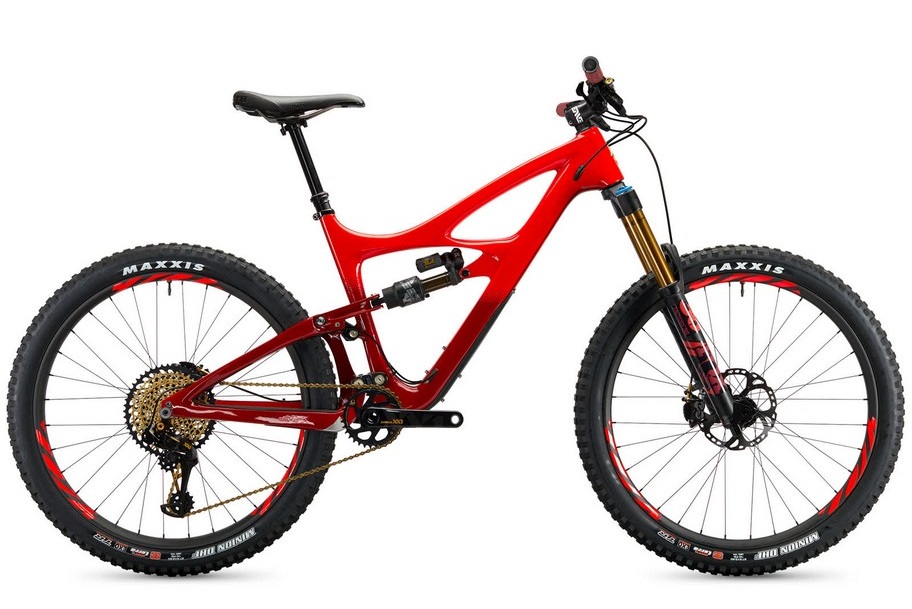
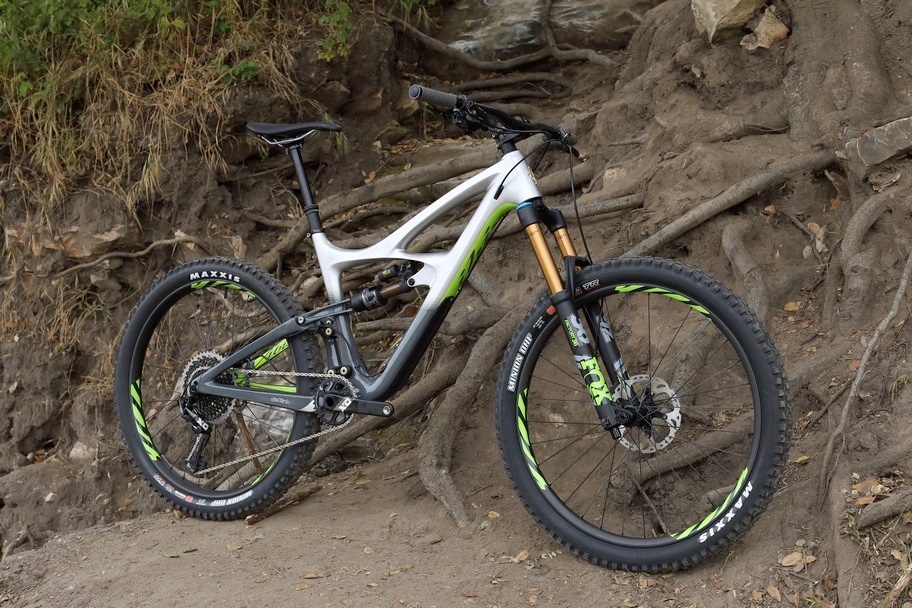
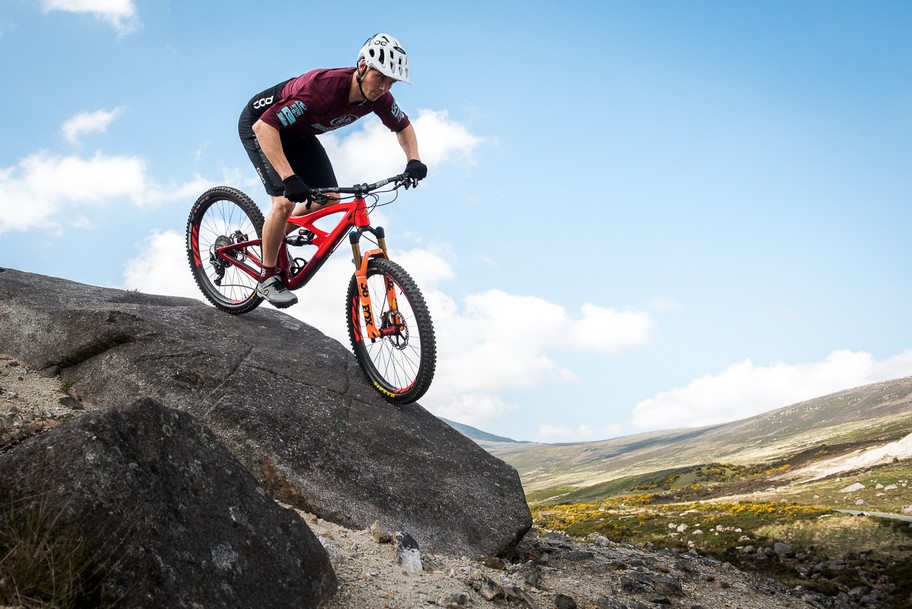
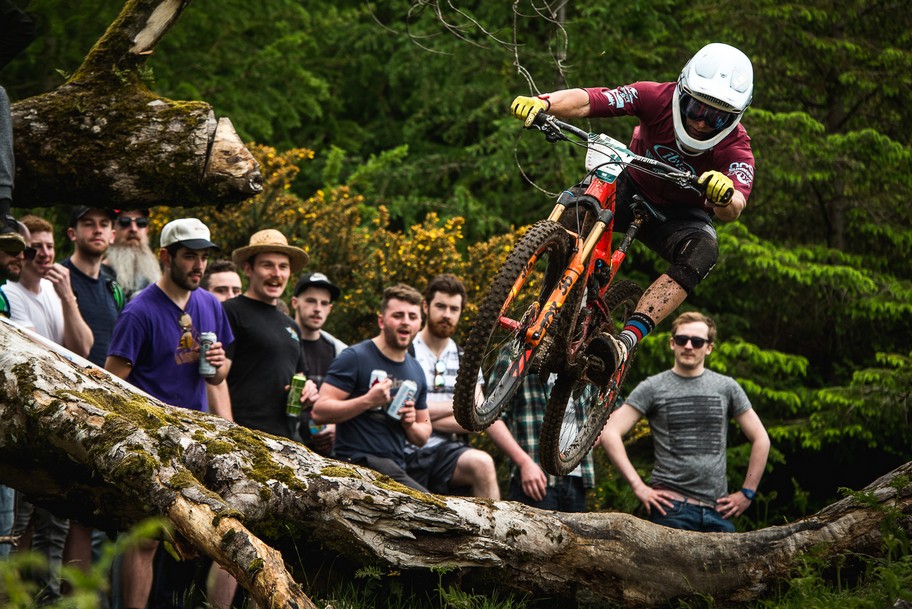
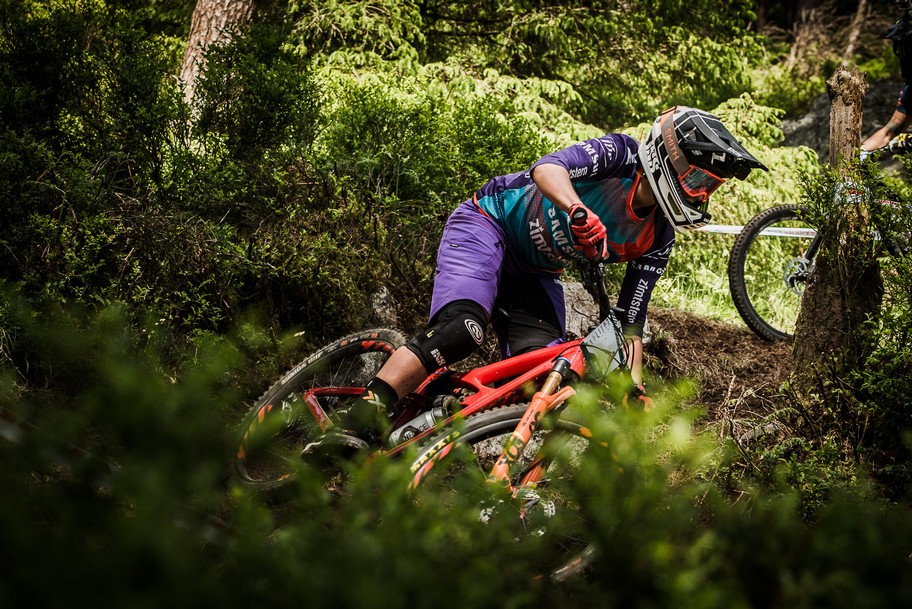
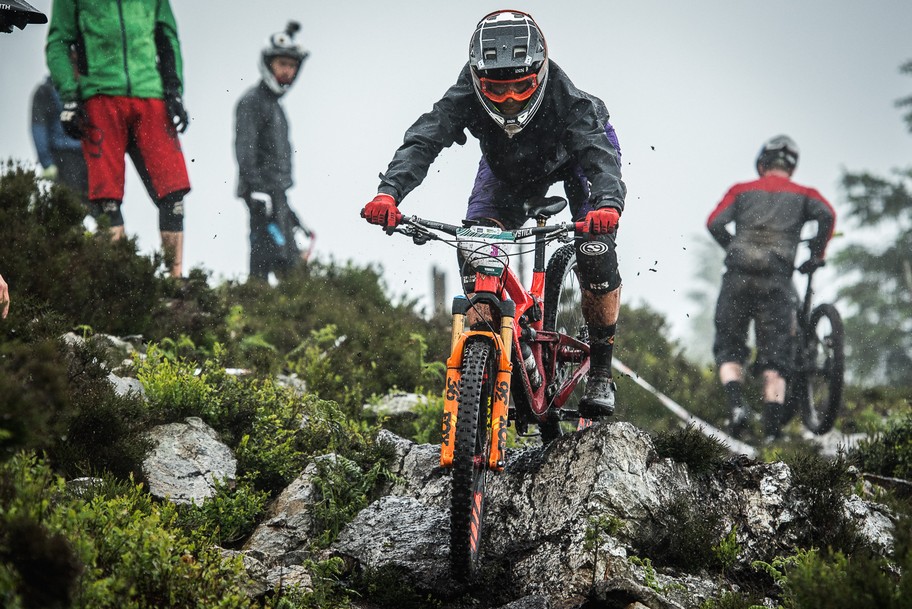
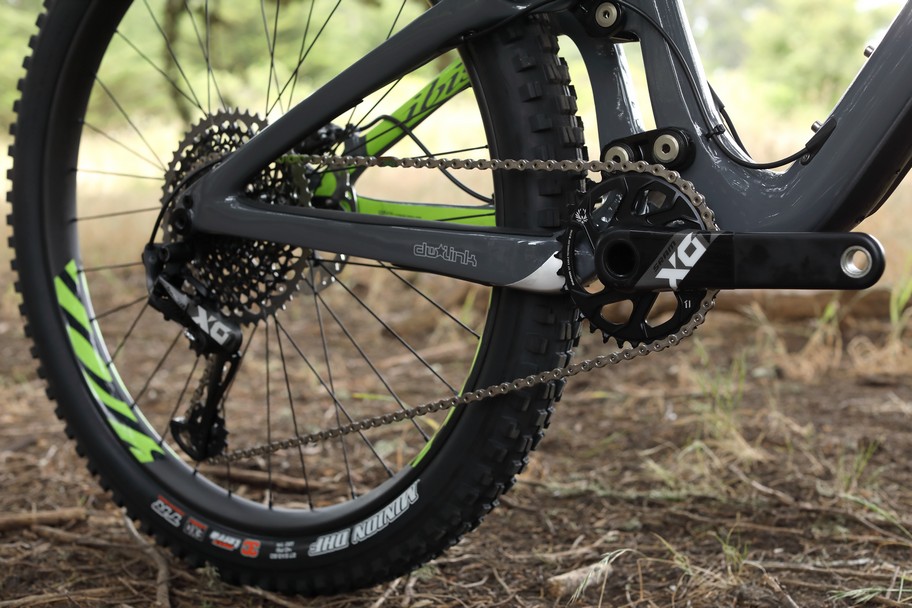
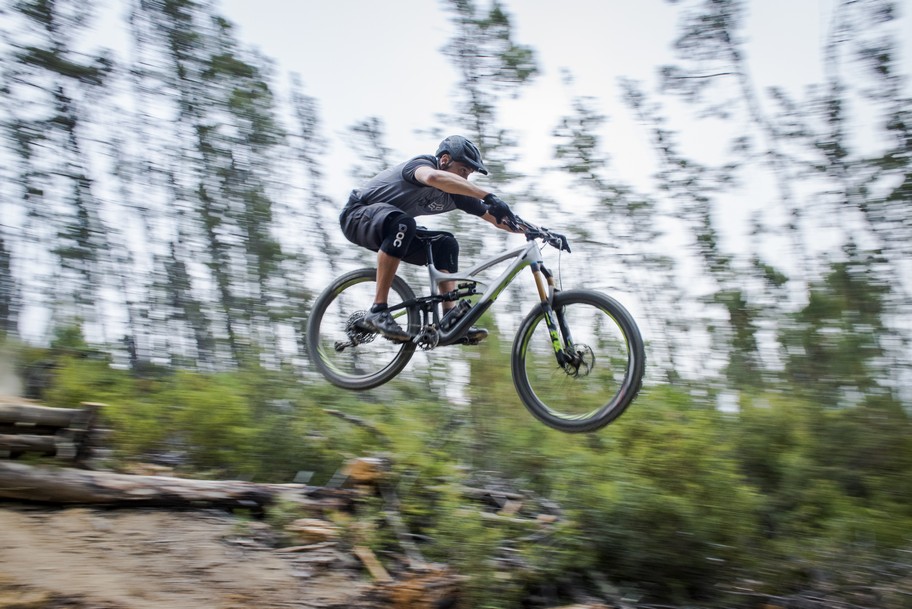
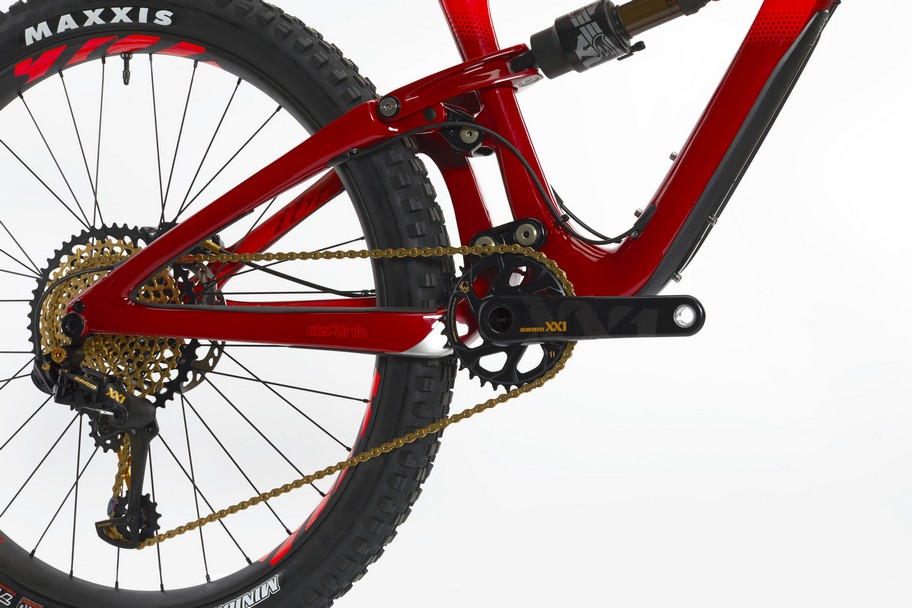
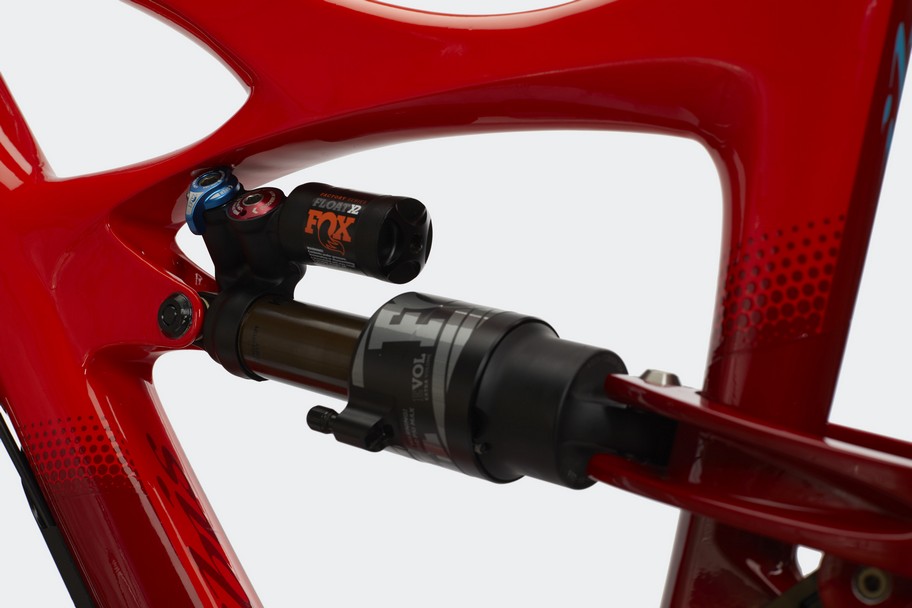
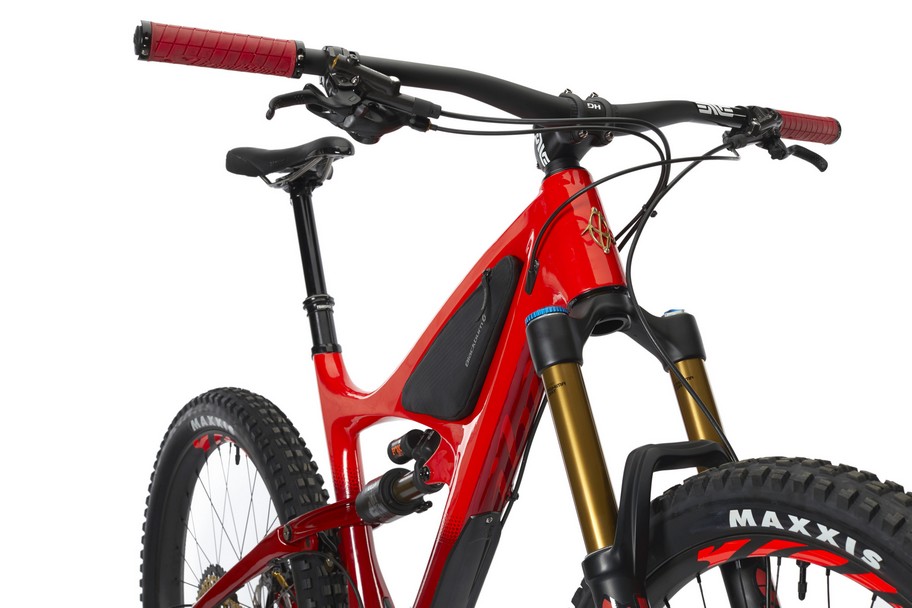
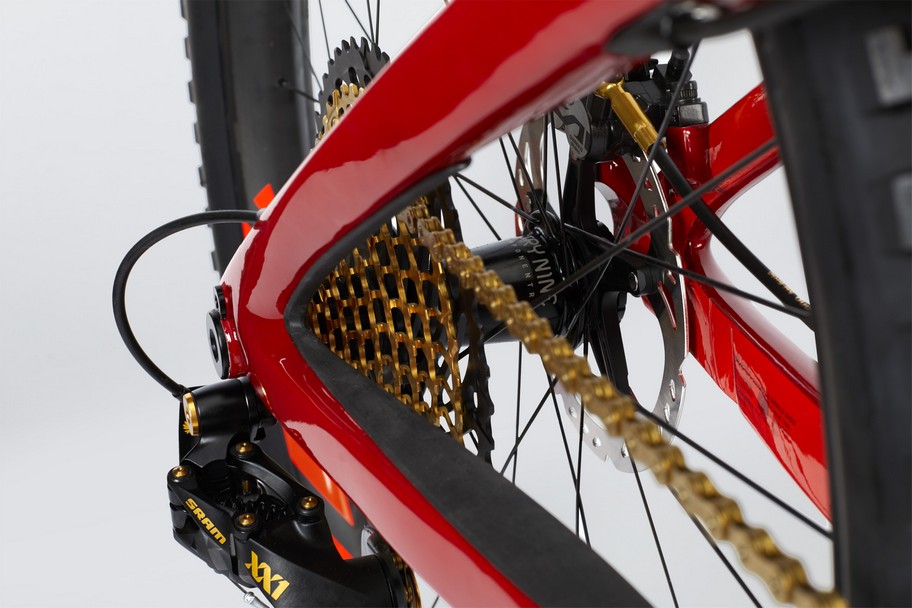
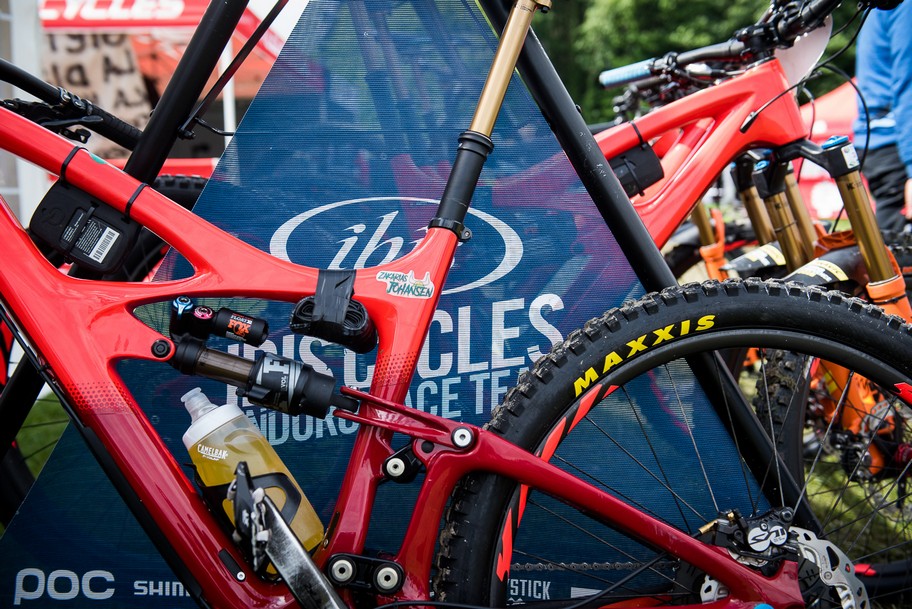
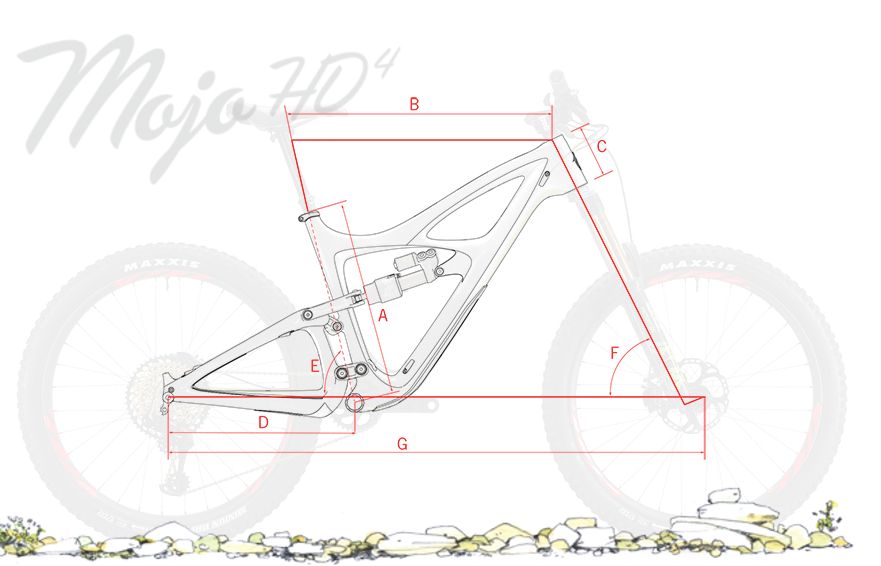





{ 0 comments… add one now }